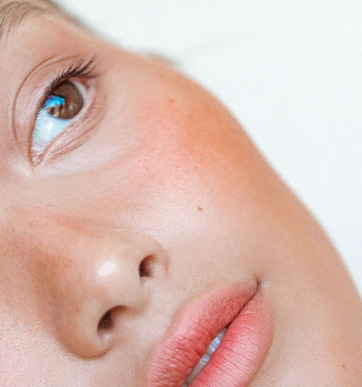 Medical Dermatology
Medical Dermatology
Best Rosacea Treatments
Do I have Rosacea?
The skin on my face flushes, and I now have background redness and intermittent break-outs. These are all symptoms of rosacea, a common, chronic and progressive disorder. Symptoms might start on the face, but they can progress to involve the chest, shoulders, and upper back.
The cause of Rosacea is unknown, and it is not curable. Rosacea is diagnosed by signs and symptoms that can be controlled with medications. This skin disorder is characterized by relapses and remissions, but there are things that you can do to help improve your chances of staying in remission by avoiding trigger factors.
Common Rosacea triggers and lifestyle changes:
- Sun exposure: Sun exposure is implicated in the background redness of rosacea. Mitigate this risk factor by using a broad-spectrum sunscreen with SPF 30 or higher every day. Blocking sunscreens that contain titanium dioxide and/or zinc oxide are best. Stay out of the sun from late morning through afternoon, and wear a hat.
- Emotional Stress: Stress can absolutely worsen the flushing associated with rosacea. Exercise, yoga, meditation, and good quality sleep can help reduce stress and improve skin.
- Overheating: Heat is another trigger for rosacea. Avoid hot weather, hot baths and showers.
- Alcohol: For some, alcohol is a potent trigger of flushing. It’s best to avoid alcohol and particularly red wine.
- Spicy or citrusy foods: For some, these food triggers can also stimulate flushing and redness. If they cause a flare-up for you, avoid them.
- Skin and hair care products that irritate the skin. Rosacea prone skin is typically very sensitive because the skin barrier is compromised. Speak with your Moy, Fincher, Chipps Dermatologist about what products are safest for you.
- Medications used to treat high blood pressure, anxiety, migraines and glaucoma are also culprits in some patients. Our team of dermatologists in Beverly Hills can help you determine which medications may be worsening your symptoms.
Medical Treatments for Rosacea
Because there are multiple subtypes of rosacea, your Moy, Fincher, Chipps dermatologist will examine your skin carefully and help devise a best treatment plan for you. You can successfully manage your symptoms by following the medical therapy prescribed by your doctor, and avoiding triggers.
- Your plan may include dermatologist recommended gentle skin care products, cosmetics and sunscreens because people with Rosacea usually have sensitive, easily irritated skin.
- Topical medications applied to the skin can reduce inflammation. Commonly prescribed medications include metronidazole, Soolantra and Azelaic acid with niacinamide.
- Oral antibiotics like tetracycline, minocycline and erythromycin can be helpful when topical treatments aren’t enough.
- In some cases, a combination of topical and oral medications may be used.
- Laser therapy can treat the visible blood vessels and can effectively reduce redness.
Ocular Rosacea
Sometimes Rosacea can involve the eyes. More than 60% of patients diagnosed with skin Rosacea also suffer from ocular Rosacea. Chronic blepharitis (inflammation of the eyelids) may be a sign of ocular rosacea and other symptoms may include: bloodshot or dry eyes, burning, stinging, itching, watering, light sensitivity, and blurred vision.
Talk with your dermatologist at Moy, Fincher, Chipps about any eye symptoms and he or she with help guide therapy and may recommend that you also so an ophthalmologist.

